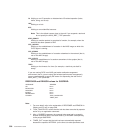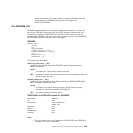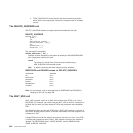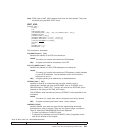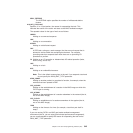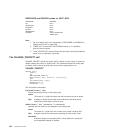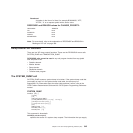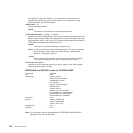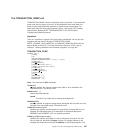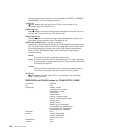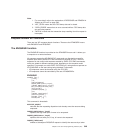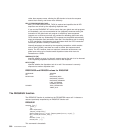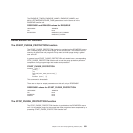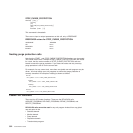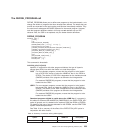here appears in the dump header, so you could use it to identify the exit
program that initiated the system dump request. For a description of valid
block-descriptors, see block-descriptor.
DUMPID(name9 | *)
returns the dump identifier.
name9
The name of a 9-byte field to receive the assigned ID.
SYSTEM_DUMPCODE(name8 | string | "string")
specifies the code corresponding to the error that caused this system dump call.
System dump codes are held in the dump table; for information about the dump
table and how it works, refer to the CICS Problem Determination Guide and the
CICS System Programming Reference manual.
name8
The name of a location containing an 8-byte string.
string A string of characters without intervening blanks. The macro generates,
from the string, a literal constant of length 8 bytes, extending with
blanks or truncating as required.
"string"
A string, enclosed in quotation marks and possibly containing blanks.
This value is processed in the same way as the “string” above.
TITLE(block-descriptor)
specifies an area containing the text you want to appear in the dump header
when the system dump is printed.
RESPONSE and REASON values for SYSTEM_DUMP:
RESPONSE REASON
OK None
EXCEPTION FESTAE_FAILED
INSUFFICIENT_STORAGE
IWMWQWRK_FAILED
NO_DATASET
PARTIAL_SYSTEM_DUMP
SDUMP_BUSY
SDUMP_FAILED
SDUMP_NOT_AUTHORIZED
SUPPRESSED_BY_DUMPOPTION
SUPPRESSED_BY_DUMPTABLE
SUPPRESSED_BY_USEREXIT
DISASTER None
INVALID INVALID_DUMPCODE
INVALID_PROBDESC
INVALID_SVC_CALL
KERNERROR None
PURGED None
Note: For more detail, refer to the explanation of RESPONSE and REASON in
“Making an XPI call” on page 308.
346 Customization Guide



